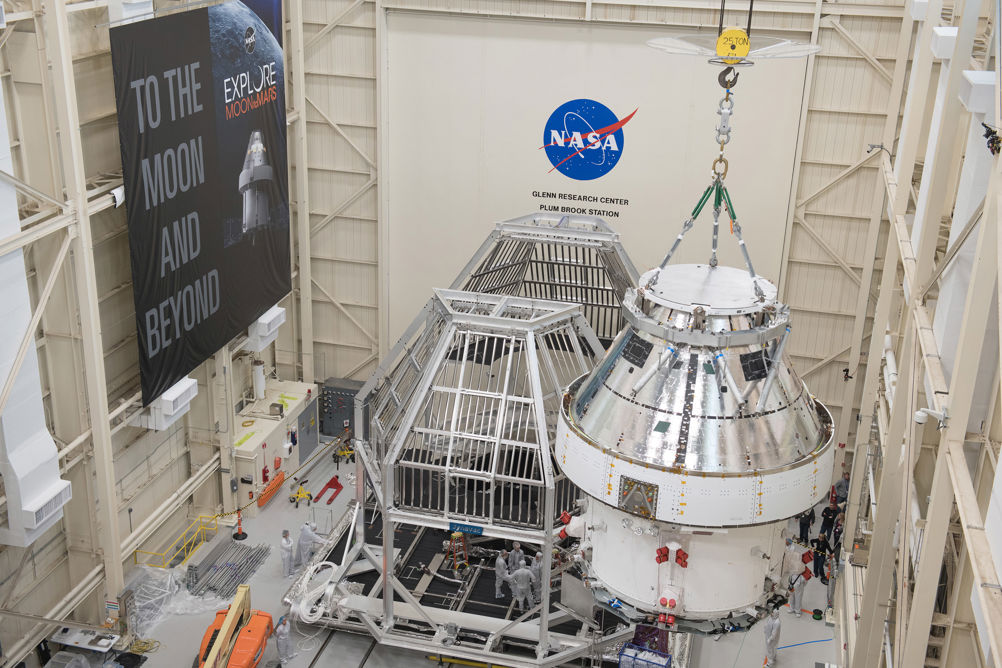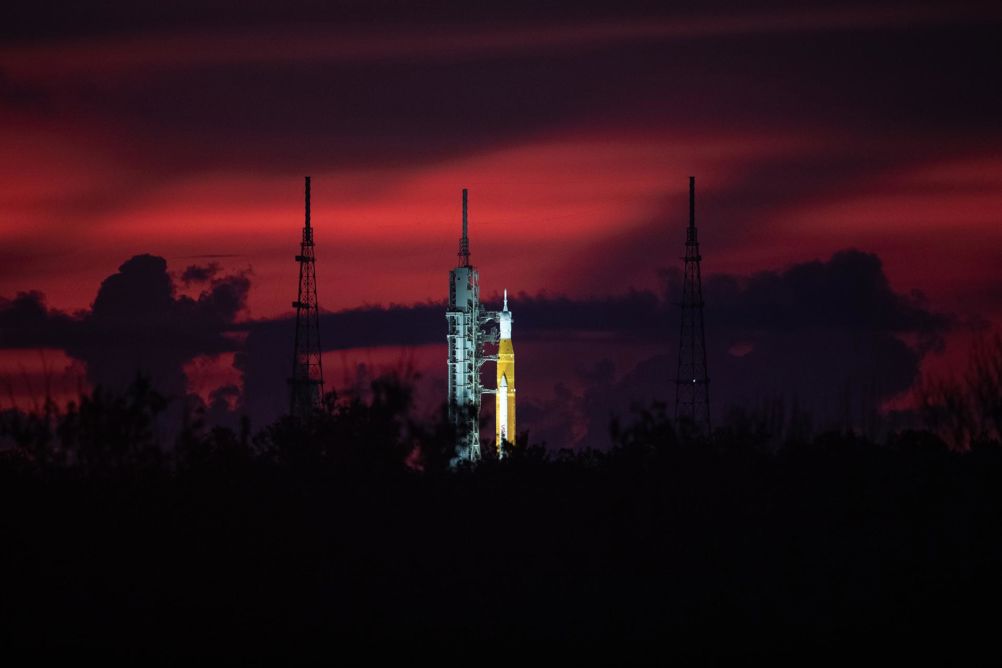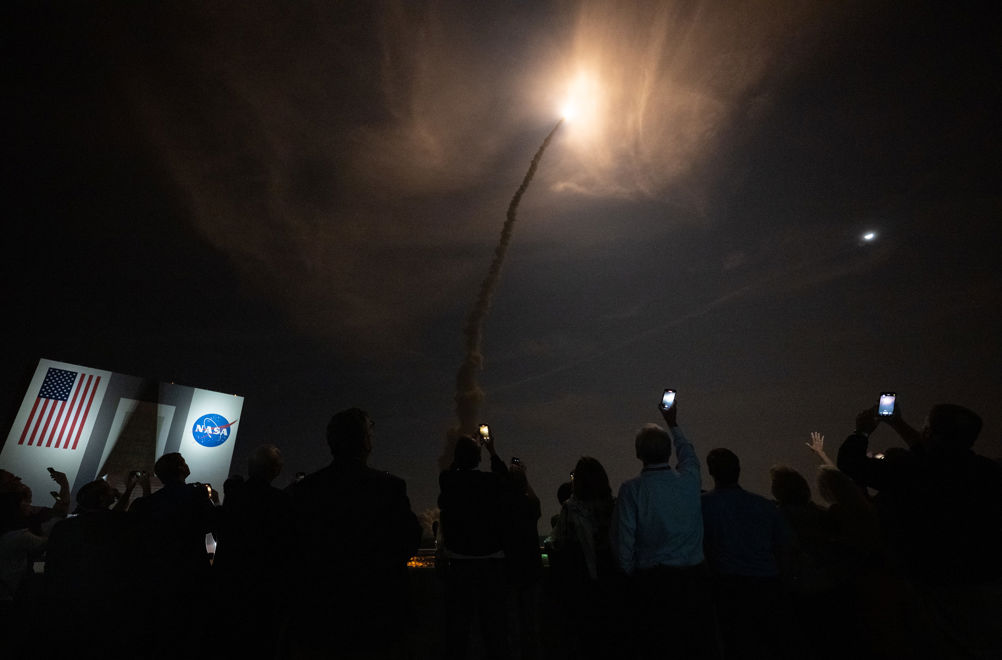If all goes to plan, NASA’s Space Launch System (SLS) rocket will have finally ascended from the Kennedy Space Centre’s Launch Complex 39B in Florida by the time you’re reading this.
Unmanned on this occasion, the first mission of NASA’s Artemis programme (Artemis I) is aiming to lay the foundation for future missions where astronauts will be on board. The rocket will carry the Orion spacecraft toward its destination thousands of miles beyond the Moon — a total of around 1.3 million miles will be travelled over the course of approximately 25 days.
Through the Artemis programme, NASA aspires to extend human existence to the Moon and beyond, aiming to enable human exploration of even farther space destinations — including eventually taking astronauts to Mars. Through the technologies used and research carried out during further lunar exploration, NASA believes Artemis can provide a wealth of knowledge which could then be applied to future missions to the Red Planet.
Built by Boeing, the SLS produces a whopping 8.8 million pounds of thrust during liftoff, propelled by a pair of five-segment boosters and four RS-25 engines. The 98-metre-tall rocket is set to make history as the world’s most powerful ever to launch. According to a report from NASA’s Office of Inspector General, the entire mission programme is expected to exceed $90bn by the end of 2025.
Defence giant Lockheed Martin is behind the Orion module, designed for human space exploration and set to be manned for Artemis II, the next stage of the programme. This could take place as early as 2024, though it’s unclear at the time of going to press whether delays to the current Artemis I mission will impact these plans.

If successful, the programme could see humans landing on the moon as early as 2025 for Artemis III — the first Moon landing since Apollo 17 back in 1972. Amongst its goals, NASA plans to facilitate the first woman and first person of colour to take steps on the Moon with Artemis III.
Orion’s journey will see it make an orbit of Earth before travelling toward the Moon with the help of the Interim Cryogenic Propulsion Stage (ICPS). The ICPS will also deploy ten small satellites (CubeSats) in order to carry out a range of experiments in space. Orion will return to the Earth’s atmosphere travelling at a speed of around 25,000mph before its planned splashdown in the Pacific Ocean near San Diego, California — producing temperatures of around 2,750°C.1
The European Space Agency (ESA) has supplied Orion’s service module, which provides the propulsion systems and will power the spacecraft on its journey from Earth orbit to the Moon. For future manned missions, the European Service Module will provide electricity, water, oxygen and nitrogen for the astronauts on board.
Artemis I, previously known as Exploration Mission-1, was originally scheduled to launch on Monday 29th August in what would be the first fully integrated test of the space exploration systems. But as with any complex technology, bumps in the road are virtually inevitable, and Artemis I’s first launch would prove to be no exception.
The SLS and Orion arrived at the launch pad on Wednesday 17th August around 7.30am EDT following a ten-hour journey from the Vehicle Assembly Building. The plan was for launch to take place within a two-hour window, beginning no earlier than 8.33am EDT.

However, engineers reported an issue when conditioning one of the RS-25 engines on the bottom of the SLS’s core stage after beginning overnight loading of liquid oxygen and liquid hydrogen into the core stage tanks and ICPS.
In order to get the engines to the necessary temperature required for lift-off, NASA’s launch controllers must condition the engines by increasing pressure on the core tanks to ‘bleed’ some of the cryogenic propellant to the engines.
NASA reported that engineers were troubleshooting an issue with Engine 3 not being properly conditioned through the bleed process. Engineers were also reported to be assessing a crack in the thermal protection system material on one of the flanges on the core stage.
Although engineers worked to try and resolve the issue within the planned two-hour launch window, this was unsuccessful and NASA was forced to scrub the launch.
A range of other issues also contributed to the struggle of the first launch attempt. NASA reported that storms in the area delayed propellant loading operations. A leak was also discovered at the quick disconnect on the 8-inch line used to vent the propellant from the core stage intertank.
NASA’s engineers continued to analyse data in the days following the unsuccessful launch attempt and it was hoped that the launch could go ahead on September 3rd. However, once again, technical issues thwarted plans, this time in the form of a reoccurring liquid hydrogen leak.

Three separate attempts at reseating the seal were unsuccessful and NASA once again called off launch plans, this time having to focus on a later launch date toward the end of September due to the original launch period closing on September 6th. During the next launch period from September 19th - October 4th, NASA aimed first for 23rd September, then later confirmed an adjusted date of 27th September for its next attempt, but Tropical Storm Ian ended up closing out the entire launch window.
After months of setbacks, Artemis finally begun its first mission with a successful launch on November 16th. As we welcome the beginning of another exciting chapter in the history of space exploration, The Engineer is once again ready to deliver updates on the trailblazing technology making these achievements happen — just as it did in 1969, preceding the Apollo 11 mission.
Apollo 11
Back in the late sixties, The Engineer reported on the Apollo 11 mission focusing specifically on the technological innovations that allowed Neil Armstrong to become the first person to walk on the Moon. Apollo 11 launched on July 16, 1969 from Cape Kennedy carrying commander Armstrong, command module pilot Michael Collins and lunar module pilot Edwin ‘Buzz’ Aldrin. Armstrong stepped onto the Moon approximately 109 hours and 42 minutes after launch in an iconic moment not just for the sector, but for the entire world. Dubbed ‘The Mightiest Machine in the World’, The Engineer’s special issue explored the technical specifications of the Saturn 5 launcher, Apollo Command Module, Service Module and Lunar Excursion Module. The issue also detailed the stages in which the launcher was developed, including proving the concept of clustered rocket engines, development of the guidance system and experience in handling liquid hydrogen fuel.





Poll: Should the UK’s railways be renationalised?
Rail passenger numbers declined from 1.27 million in 1946 to 735,000 in 1994 a fall of 42% over 49 years. In 2019 the last pre-Covid year the number...